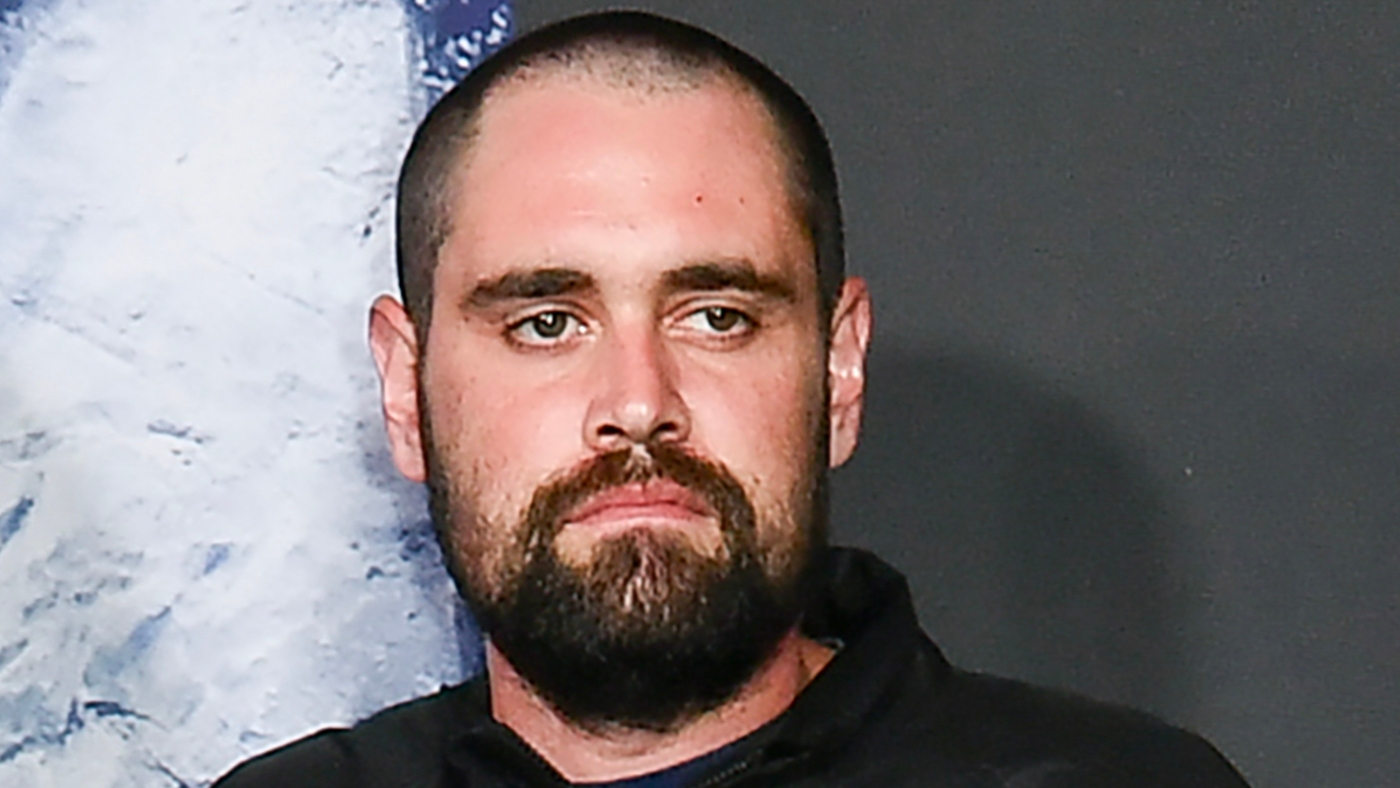Lifestyle
Shirtless Man Climbs Eiffel Tower Hours Before Olympics Closing Ceremony

Rock climbing walls are for wusses …. so says a dude who just scaled the Eiffel Tower … and the timing of his stunt could not have been worse.
Watch the vid … the man scales the 330-meter tower, making his way over the blue ring of the Olympics logo … which is temporarily perched on the famed landmark.
Some guy is climbing on the Olympic Rings at the Eiffel Tower. You can see him on the blue ring.
Tourists are being evacuated for safety. Entry beneath the tower is closed.
He took ‘climb the Eiffel Tower’ too literally! #Olympics #Paris2024 @NBCOlympics @NBCNews @latimes pic.twitter.com/01BFmJqTOV
— kevinwinston (@kevinwinston) August 11, 2024
@kevinwinston
The incident went down Sunday afternoon … just 3 hours before the start of the Olympics closing ceremony, forcing French police to evacuate the area around the Tower.
It’s unclear where the climber kicked off his ascent … but he was spotted gaining some serious height around the tower’s first viewing deck.
Visitors were escorted away by local police around 3 PM … with some tourists even being stuck on the 2nd floor for around 30 minutes.
The Eiffel Tower has been a visible landmark during the Paris Summer Games … a temporary stadium was built beneath the looming structure for the beach volleyball portion of the competition. It’s also served as a backdrop for other events.
NBC
Celine Dion Chokes Up Performing at Olympics Opening Ceremony
It was heavily featured in the opening ceremony, when Celine Dion made her grand return from one of the tower’s viewing areas.
Ahead of Sunday’s events, Interior Minister Gérald Darmanin confirmed 3,000 police officers will be stationed at the Stade de France … with an additional 20,000 police troops situated throughout the City.
Following the thwarted terror plot on Taylor Swift‘s “Eras” tour stop in Austria, safety is clearly paramount.

Lifestyle
Nick Reiner’s attorney removes himself from case

Nick Reiner arrives at the premiere of Spinal Tap II: The End Continues on Tuesday, Sept. 9, 2025, in Los Angeles.
Richard Shotwell/Invision/AP
hide caption
toggle caption
Richard Shotwell/Invision/AP
LOS ANGELES – Alan Jackson, the high-power attorney representing Nick Reiner in the stabbing death of his parents, producer-actor-director Rob Reiner and photographer Michele Singer Reiner, withdrew from the case Wednesday.
Reiner will now be represented by public defender Kimberly Greene.
Wearing a brown jumpsuit, Reiner, 32, didn’t enter a plea during the brief hearing. A judge has rescheduled his arraignment for Feb. 23.
Following the hearing, defense attorney Alan Jackson told a throng of reporters that Reiner is not guilty of murder.
“We’ve investigated this matter top to bottom, back to front. What we’ve learned and you can take this to the bank, is that pursuant to the law of this state, pursuant to the law in California, Nick Reiner is not guilty of murder,” he said.

Reiner is charged with first-degree murder, with special circumstances, in the stabbing deaths of his parents – father Rob, 78, and mother Michele, 70.
The Los Angeles coroner ruled that the two died from injuries inflicted by a knife.
The charges carry a maximum sentence of death. LA County District Attorney Nathan Hochman said he has not decided whether to seek the death penalty.
“We are fully confident that a jury will convict Nick Reiner beyond a reasonable doubt of the brutal murder of his parents — Rob Reiner and Michele Singer Reiner … and do so unanimously,” he said.

Last month, after Reiner’s initial court appearance, Jackson said, “There are very, very complex and serious issues that are associated with this case. These need to be thoroughly but very carefully dealt with and examined and looked at and analyzed. We ask that during this process, you allow the system to move forward – not with a rush to judgment, not with jumping to conclusions.”
The younger Reiner had a long history of substance abuse and attempts at rehabilitation.
His parents had become increasingly alarmed about his behavior in the weeks before the killings.
Legal experts say there is a possibility that Reiner’s legal team could attempt to use an insanity defense.
Defense attorney Dmitry Gorin, a former LA County prosecutor, said claiming insanity or mental impairment presents a major challenge for any defense team.

He told The Los Angeles Times, “The burden of proof is on the defense in an insanity case, and the jury may see the defense as an excuse for committing a serious crime.“
“The jury sets a very high bar on the defendant because it understands that it will release him from legal responsibility,” Gorin added.
The death of Rob Reiner, who first won fame as part of the legendary 1970s sitcom All in the Family, playing the role of Michael “Meathead” Stivic, was a beloved figure in Hollywood and his death sent shockwaves through the community.
After All in the Family, Reiner achieved even more fame as a director of films such as A Few Good Men, Stand By Me, The Princess Bride and When Harry Met Sally. He was nominated for four Golden Globe Awards in the best director category.
Rob Reiner came from a show business pedigree. His father, Carl Reiner, was a legendary pioneer in television who created the iconic 1960s comedy, The Dick Van Dyke Show.
Lifestyle
Chiefs Aware of Domestic Violence Allegations Made By Rashee Rice’s Ex

Chiefs
Aware of Dom. Violence Claims
… Made By Rashee Rice’s Ex
Published
The Kansas City Chiefs are addressing the recent social media post made by Rashee Rice‘s ex … where she claimed she was abused during the course of an eight-year relationship, including when she was pregnant.
The shocking allegations were made as part of a lengthy statement shared to the Dacoda Jones’ Instagram account on Wednesday … when said she kept quiet for years to protect her former partner’s image — but can no longer stay silent.
She did not name Rice directly … but certain details about the relationship match up. Rice’s own grandmother even commented on the post … and in a phone conversation with TMZ Sports, she said Jones lied about the abuse after a dispute over paying for an apartment.
In the post, Jones said her relationship ended recently … and “since then it’s been nothing but hell.”
On top of the abuse allegations, Jones claims her ex locked her outside of their home in freezing temperatures after he was caught cheating, damaged her clothes and shoes and showed up at her new home and broke her door.
Jones also claims the man abandoned her and their kids in Kansas and she had to “beg” him for money so she could drive them to Texas.
Jones says he is now trying to force her and their kids out of their home “for no apparent reason.”
“I’ve known this man for YEARS,” Jones said. “He tries to put on this persona like he’s dad of the year. He does the bare minimum and I have to beg for that.”
“I’ve protected his image too long and I’m done doing that. It’s time to protect my peace, protect my children and stand up for myself.”
Jones included images of her alleged injuries from the domestic violence incidents … as well as damage to her home.
We reached out to Rice’s attorney, Royce West, who said his client has not been arrested or charged for domestic violence and hung up the phone.
The NFL declined to comment … but the Chiefs said they are “aware” of the claims made on social media and are in communication with the league.
Rice was suspended six games earlier this season for a 2024 hit-and-run crash in Texas … and teammates like Travis Kelce and Tyquan Thornton wore “Free 4” shirts in support of him during the ban.
He pleaded guilty to two felonies stemming from the incident — one count of racing on a highway causing bodily injury and one count of collision involving serious bodily injury … and was ordered to 30 days in jail and five years of probation.
We’ve reached out to Rice’s camp. No word back.
Lifestyle
Timothée Chalamet brings a lot to the table in ‘Marty Supreme’

Timothée Chalamet plays a shoe salesman who dreams of becoming the greatest table tennis player in the world in Marty Supreme.
A24
hide caption
toggle caption
A24
Last year, while accepting a Screen Actors Guild award for A Complete Unknown, Timothée Chalamet told the audience, “I want to be one of the greats; I’m inspired by the greats.” Many criticized him for his immodesty, but I found it refreshing: After all, Chalamet has never made a secret of his ambition in his interviews or his choice of material.
In his best performances, you can see both the character and the actor pushing themselves to greatness, the way Chalamet did playing Bob Dylan in A Complete Unknown, which earned him the second of two Oscar nominations. He’s widely expected to receive a third for his performance in Josh Safdie’s thrilling new movie, Marty Supreme, in which Chalamet pushes himself even harder still.
Chalamet plays Marty Mauser, a 23-year-old shoe salesman in 1952 New York who dreams of being recognized as the greatest table-tennis player in the world. He’s a brilliant player, but for a poor Lower East Side Jewish kid like Marty, playing brilliantly isn’t enough: Simply getting to championship tournaments in London and Tokyo will require money he doesn’t have.

And so Marty, a scrappy, speedy dynamo with a silver tongue and inhuman levels of chutzpah, sets out to borrow, steal, cheat, sweet-talk and hustle his way to the top. He spends almost the entire movie on the run, shaking down friends and shaking off family members, hatching new scams and fleeing the folks he’s already scammed, and generally trying to extricate himself from disasters of his own making.
Marty is very loosely based on the real-life table-tennis pro Marty Reisman. But as a character, he’s cut from the same cloth as the unstoppable antiheroes of Uncut Gems and Good Time, both of which Josh Safdie directed with his brother Benny. Although Josh directed Marty Supreme solo, the ferocious energy of his filmmaking is in line with those earlier New York nail-biters, only this time with a period setting. Most of the story unfolds against a seedy, teeming postwar Manhattan, superbly rendered by the veteran production designer Jack Fisk as a world of shadowy game rooms and rundown apartments.
Early on, though, Marty does make his way to London, where he finagles a room at the same hotel as Kay Stone, a movie star past her 1930s prime. She’s played by Gwyneth Paltrow, in a luminous and long-overdue return to the big screen. Marty is soon having a hot fling with Kay, even as he tries to swindle her ruthless businessman husband, Milton Rockwell, played by the Canadian entrepreneur and Shark Tank regular Kevin O’Leary.
Marty Supreme is full of such ingenious, faintly meta bits of stunt casting. The rascally independent filmmaker Abel Ferrara turns up as a dog-loving mobster. The real-life table-tennis star Koto Kawaguchi plays a Japanese champ who beats Marty in London and leaves him spoiling for a rematch. And Géza Röhrig, from the Holocaust drama Son of Saul, pops up as Marty’s friend Bela Kletzki, a table tennis champ who survived Auschwitz. Bela tells his story in one of the film’s best and strangest scenes, a death-camp flashback that proves crucial to the movie’s meaning.
In one early scene, Marty brags to some journalists that he’s “Hitler’s worst nightmare.” It’s not a stretch to read Marty Supreme as a kind of geopolitical parable, culminating in an epic table-tennis match, pitting a Jewish player against a Japanese one, both sides seeking a hard-won triumph after the horrors of World War II.

The personal victory that Marty seeks would also be a symbolic one, striking a blow for Jewish survival and assimilation — and regeneration: I haven’t yet mentioned a crucial subplot involving Marty’s close friend Rachel, terrifically played by Odessa A’zion, who’s carrying his child and gets sucked into his web of lies.
Josh Safdie, who co-wrote and co-edited the film with Ronald Bronstein, doesn’t belabor his ideas. He’s so busy entertaining you, as Marty ping-pongs from one catastrophe to the next, that you’d be forgiven for missing what’s percolating beneath the movie’s hyperkinetic surface.
Marty himself, the most incorrigible movie protagonist in many a moon, has already stirred much debate; many find his company insufferable and his actions indefensible. But the movies can be a wonderfully amoral medium, and I found myself liking Marty Mauser — and not just liking him, but actually rooting for him to succeed. It takes more than a good actor to pull that off. It takes one of the greats.

-

 News1 week ago
News1 week agoFor those who help the poor, 2025 goes down as a year of chaos
-

 Detroit, MI4 days ago
Detroit, MI4 days ago2 hospitalized after shooting on Lodge Freeway in Detroit
-
Georgia1 week ago
Best in Georgia: 2025 AJC Varsity high school football all-state teams
-

 Dallas, TX3 days ago
Dallas, TX3 days agoDefensive coordinator candidates who could improve Cowboys’ brutal secondary in 2026
-

 Detroit, MI1 week ago
Detroit, MI1 week agoWith 46k outages around Michigan, Metro Detroit prepares for power loss
-

 Southeast1 week ago
Southeast1 week agoMurder in small-town America: The crimes that tore quiet communities apart in 2025
-

 Miami, FL1 week ago
Miami, FL1 week agoMiami-Dade sheriff’s deputy opens fire on vehicle after altercation during traffic stop, officials say
-

 Midwest1 week ago
Midwest1 week agoMcDonald’s locks doors to keep out individuals who present ‘a risk’ in crime-ridden Minneapolis area















